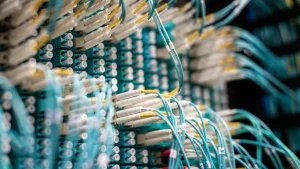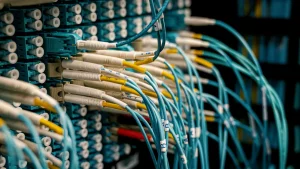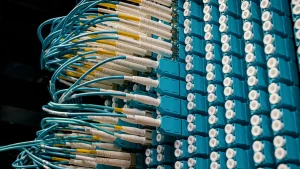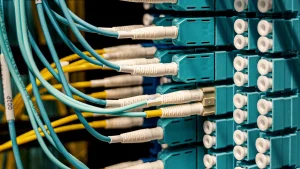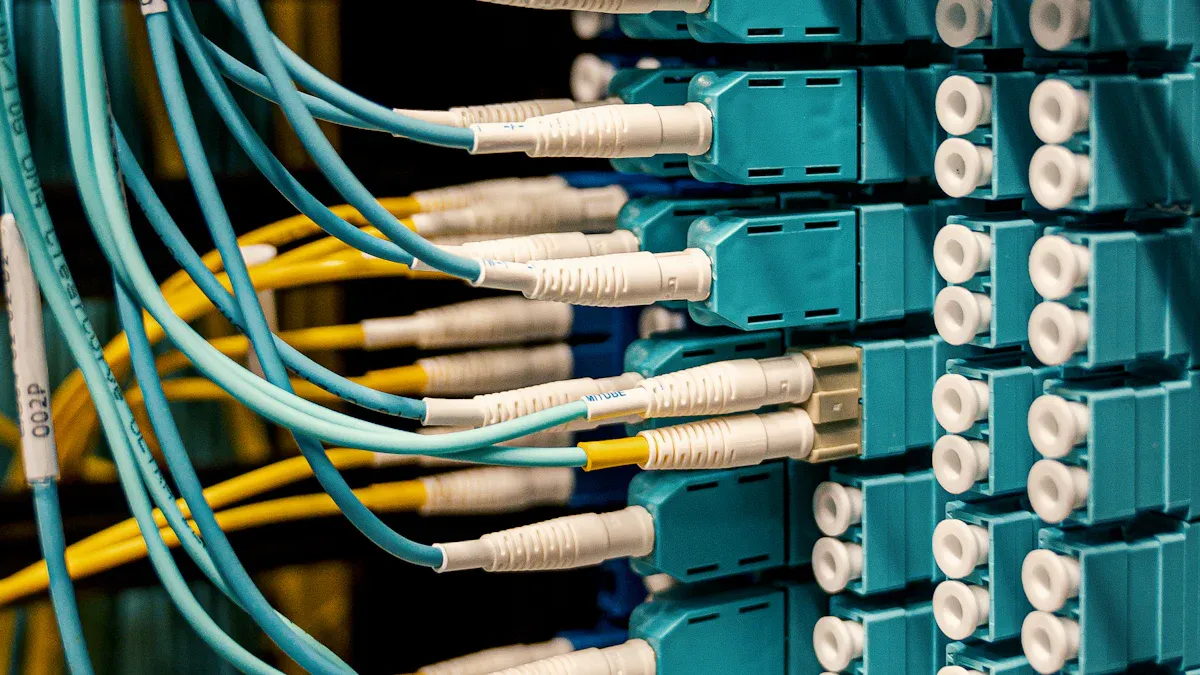
An optic fiber termination box serves as a critical junction for organizing and protecting fiber optic cables. In healthcare, these boxes ensure the seamless transmission of electronic health records, medical imaging, and remote monitoring data. The healthcare sector’s reliance on digital technologies demands reliable, high-speed connectivity, making these boxes indispensable for secure and efficient data communication.
Key Takeaways
- Fiber boxes help organize and protect cables in healthcare networks.
- They improve network performance by stopping signal loss and damage.
- Picking the right box means checking size, strength, and standards.
Understanding Optic Fiber Termination Boxes
Definition and Core Functions
An optic fiber termination box acts as a centralized hub for managing and protecting fiber optic cables. It provides a secure environment for cable splicing, termination, and distribution, ensuring optimal network performance. These boxes play a vital role in maintaining the integrity of data transmission by reducing signal loss and preventing physical damage to cables.
Industry standards such as those set by the Telecommunications Industry Association (TIA) and the International Electrotechnical Commission (IEC) ensure that optic fiber termination boxes meet stringent requirements for environmental protection, mechanical strength, and optical performance. Compliance with these standards guarantees reliability and safety in healthcare networks.
Key Features and Components
Optic fiber termination boxes are equipped with several essential features that enhance their functionality:
- Port Density: High port density accommodates multiple connections, optimizing space and efficiency.
- Management Functionality: Integrated cable management systems simplify installation and maintenance.
- Environmental Adaptability: Weather-resistant designs ensure durability in challenging conditions.
- Security Measures: Enhanced locking mechanisms protect sensitive data from unauthorized access.
Key performance indicators such as the number of ports, usability, and environmental adaptability directly influence the reliability of healthcare networks. These features ensure seamless data transmission, even in critical environments.
Types of Optic Fiber Termination Boxes
Optic fiber termination boxes come in various types to suit different operational needs:
- Wall-Mounted Boxes: Ideal for compact spaces, these boxes offer easy installation and accessibility.
- Rack-Mounted Boxes: Designed for larger networks, these boxes provide scalability and high port density.
- Outdoor Boxes: Built with weather-resistant materials, these boxes ensure functionality in harsh environments.
- Customizable Boxes: Tailored solutions meet specific requirements, offering flexibility for unique healthcare applications.
| Aspect | Description |
|---|---|
| Evolution of Design | Transition from traditional bulky designs to modern, sleek, and ergonomic systems. |
| Performance Enhancements | Integration of high performance with ease of installation and maintenance. |
| Customization | Shift towards tailored installations to meet specific operational demands. |
| Material Innovations | Use of advanced materials that enhance durability and adaptability in various environments. |
| Scalability | Adoption of solutions that allow for scalability while reducing lifecycle costs. |
| Weather-Resistant Features | Incorporation of features that ensure functionality in challenging environmental conditions. |
| Security Protocols | Enhanced security measures for outdoor setups to protect network integrity. |
| Future-Proof Designs | Development of designs that facilitate future upgrades and expansions in network capabilities. |
These diverse options enable healthcare facilities to select the most suitable optic fiber termination box for their specific network requirements.
Importance of Optic Fiber Termination Boxes in Healthcare
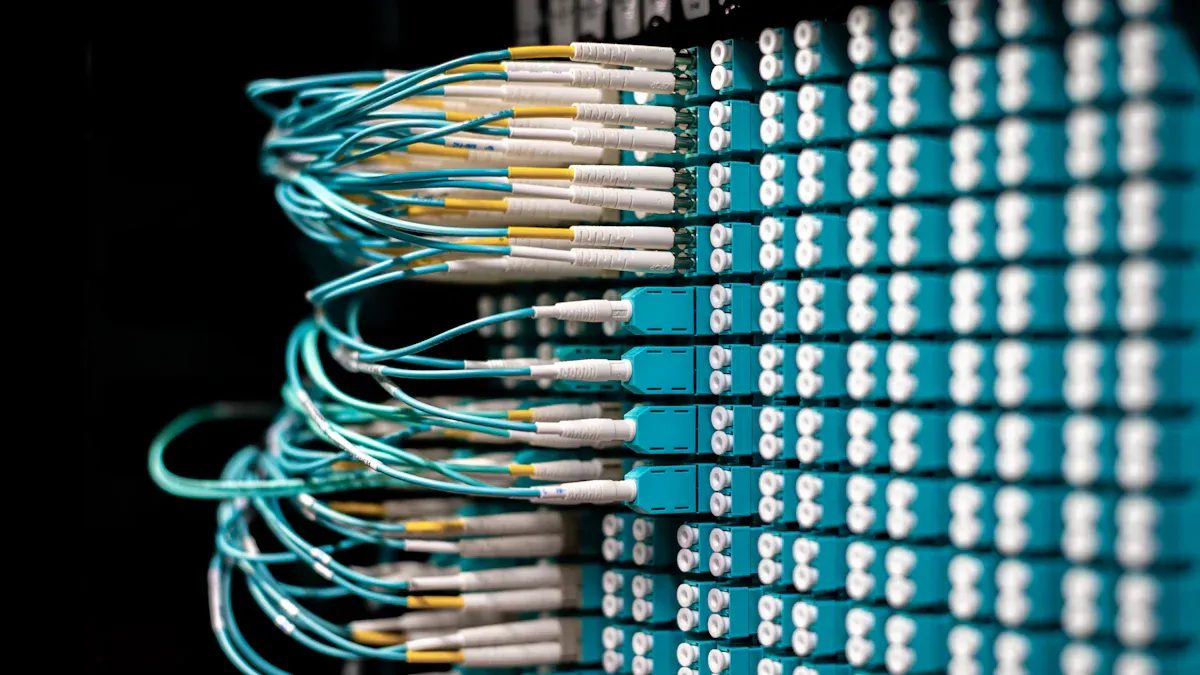
Meeting the Demands of Healthcare IT Infrastructure
Healthcare IT infrastructures face increasing demands due to advancements in medical technology and the growing reliance on digital systems. Optic fiber termination boxes play a pivotal role in addressing these challenges by enabling high-bandwidth connectivity essential for modern healthcare applications.
- The fiber termination box market continues to expand, driven by the need for reliable and scalable network solutions in healthcare.
- Fiber optic technology supports critical applications such as medical imaging, electronic health records (EHRs), and remote patient monitoring.
- Innovations like software-defined networking (SDN) and network function virtualization (NFV) enhance network management, ensuring seamless data flow across healthcare facilities.
- The proliferation of IoT devices in healthcare necessitates robust infrastructure capable of handling high-bandwidth connections.
By integrating optic fiber termination boxes into their networks, healthcare providers can meet these demands while ensuring operational efficiency and patient care quality.
Ensuring Reliability and Uptime in Critical Environments
Reliability and uptime are non-negotiable in healthcare environments where even minor network disruptions can have serious consequences. Optic fiber termination boxes contribute to network stability by offering advanced features that safeguard data transmission and minimize downtime.
Fiber optic cabling solutions outperform traditional copper cables by delivering faster data transmission speeds and immunity to electromagnetic interference (EMI). This ensures signal integrity, which is critical for maintaining network stability in healthcare settings.
Pre-terminated fiber assemblies further enhance reliability by reducing installation time by up to 65%. This minimizes downtime during upgrades or maintenance, ensuring uninterrupted access to vital systems such as patient monitoring devices and diagnostic tools. Optic fiber termination boxes provide the backbone for reliable healthcare IT infrastructure, supporting critical operations without compromise.
Supporting High-Speed Data Transmission for Healthcare Applications
High-speed data transmission is essential for healthcare applications that require rapid access to information. Optic fiber termination boxes facilitate this by optimizing the performance of fiber optic networks, enabling healthcare providers to deliver timely and accurate care.
| Healthcare Facility | Application Description |
|---|---|
| New York Presbyterian Hospital | Enhanced telemedicine capabilities with high-definition video consultations, improving patient outcomes and satisfaction. |
| Massachusetts General Hospital | Optimized imaging systems for rapid transmission of medical images, accelerating diagnostic timelines and improving patient care. |
| Cleveland Clinic | Improved EHR access and care coordination, enhancing patient safety and operational efficiency. |
| Mayo Clinic | Expanded telehealth services in rural areas, improving healthcare accessibility and timely medical interventions. |
| Baptist Health South Florida | Enhanced patient monitoring with real-time access to vital signs, improving patient safety and care quality. |
| Texas Medical Center | Accelerated medical research initiatives through high-speed data transfer, fostering innovation in healthcare practices. |
| Stanford Health Care | Optimized diagnostic capabilities with fast access to patient information, improving efficiency and patient care outcomes. |
These examples demonstrate how optic fiber termination boxes empower healthcare facilities to leverage high-speed data transmission for improved patient care, operational efficiency, and innovation.
Key Benefits of Optic Fiber Termination Boxes
Enhanced Network Reliability and Performance
Optic fiber termination boxes significantly enhance network reliability and performance by ensuring efficient management of fiber connections. These boxes protect cables from environmental damage, reducing the risk of signal loss and downtime. Their robust design and advanced features contribute to the durability of healthcare IT infrastructure, enabling uninterrupted access to critical systems.
The increasing reliance on internet-connected devices and the transition to 5G technology further highlight the importance of stable and secure fiber optic networks. Optic fiber termination boxes meet these demands by supporting high-speed and low-latency connections, essential for healthcare applications like telemedicine and medical imaging.
The Fiber Optic Termination Boxes Market underscores their vital role in telecommunications and data networks. By safeguarding fiber connections, these boxes ensure long-term reliability and optimal performance, making them indispensable for healthcare environments.
Improved Data Security and Patient Privacy
Data security and patient privacy are paramount in healthcare. Optic fiber termination boxes play a crucial role in safeguarding sensitive information by reducing signal loss and preventing unauthorized access. Their advanced locking mechanisms and secure cable management systems protect data integrity, ensuring compliance with stringent healthcare regulations.
Healthcare networks face growing cybersecurity concerns due to the proliferation of connected devices and digital systems. Optic fiber termination boxes address these challenges by providing enhanced security features that mitigate risks and support secure data transmission. As healthcare providers invest in advanced fiber optic solutions, they can ensure the confidentiality of electronic health records and other sensitive data.
- Enhanced data security reduces vulnerabilities in healthcare networks.
- Advanced fiber optic solutions support compliance with privacy regulations like HIPAA.
- Secure cable management systems prevent unauthorized access to critical infrastructure.
Scalability for Future Network Growth
Healthcare networks must adapt to evolving demands and technological advancements. Optic fiber termination boxes offer scalability, enabling facilities to expand their infrastructure without compromising performance. Their modular designs and high port density support future upgrades, making them ideal for growing healthcare networks.
Statistical forecasts demonstrate the scalability of optic fiber termination boxes. The market size is projected to grow from $1.2 billion in 2023 to $2.4 billion by 2032, with a compound annual growth rate (CAGR) of 7.8%. This growth reflects the increasing demand for high-speed internet, expansion of data centers, and deployment of 5G networks.
| Year | Market Size (in billion USD) | CAGR (%) |
|---|---|---|
| 2023 | 1.2 | N/A |
| 2032 | 2.4 | 7.8 |
Healthcare facilities benefit from scalable solutions that accommodate future needs, including traffic management, public safety, and utilities. Optic fiber termination boxes ensure that networks remain adaptable, supporting innovation and growth in healthcare IT infrastructure.
Practical Applications in Healthcare
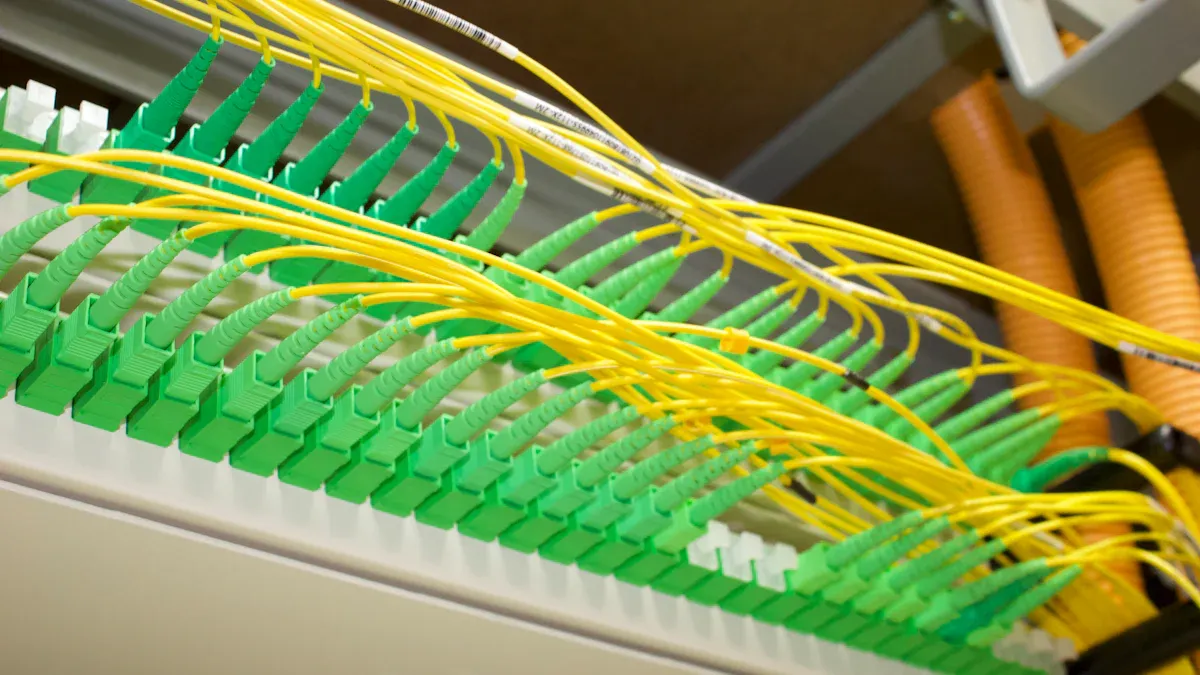
Case Study: Hospital Network Upgrade
A large healthcare provider recently upgraded its network infrastructure across 140 locations. The project involved installing surface wall-mounted optic fiber termination boxes to optimize space and improve cable management. These boxes utilized LC connectors for terminating fiber optic data cables in server rooms, ensuring seamless integration with existing systems. Compliance with ANSI/TIA/EIA-606 Administration Standards for labeling further enhanced the organization and traceability of the network components.
The upgrade also addressed electromagnetic interference (EMI) issues, which previously disrupted sensitive medical devices. By incorporating EMI shielding into the network design, the hospital achieved measurable improvements in reliability. This enhancement ensured uninterrupted operation of critical systems, such as patient monitoring devices and diagnostic imaging equipment. Additionally, hygienic fiber panels with washable surfaces were installed in operating rooms and other sterile environments. These panels reduced contamination risks, aligning with the hospital’s infection control protocols.
Case Study: Telemedicine Infrastructure Enhancement
The growing demand for telemedicine services has driven the need for high-speed communication networks in healthcare. A leading medical center implemented optic fiber termination boxes to support its telemedicine infrastructure. These boxes facilitated the transfer of large medical data files, enabling applications such as remote diagnostics, virtual surgeries, and real-time patient monitoring.
The deployment of fiber optic solutions significantly improved the center’s ability to deliver telemedicine services. High-speed data transmission allowed for seamless video consultations and rapid sharing of diagnostic images. This capability proved essential for providing timely care to patients in rural and underserved areas. The enhanced infrastructure also supported the integration of advanced telehealth technologies, ensuring the center remained at the forefront of innovation in healthcare delivery.
Choosing the Right Optic Fiber Termination Box
Factors to Consider (e.g., capacity, durability, compliance)
Selecting the right optic fiber termination box involves evaluating several critical factors to ensure optimal performance and longevity. Capacity plays a pivotal role, as the box must accommodate current network demands while allowing room for future expansion. Durability is equally important, especially in healthcare environments where equipment must withstand rigorous conditions. High-quality seals and gaskets prevent moisture infiltration, while impact-resistant designs protect against physical damage. Materials that resist chemical exposure and handle thermal cycling further enhance reliability.
Compliance with industry standards ensures the termination box meets stringent safety and performance requirements. Certifications, such as those from Fibertronics, Inc., demonstrate adherence to AS9100D and ITAR standards, as well as NEC 770 compliance. These certifications reflect rigorous testing, guaranteeing the product’s suitability for critical healthcare applications.
Evaluating Vendors and Product Options
Choosing a reliable vendor is essential for acquiring high-quality optic fiber termination boxes. Vendors should offer products with proven performance metrics, such as precision in cutting and splicing fibers and the use of high-quality connectors. Additionally, they should provide customizable solutions to meet specific healthcare needs.
Healthcare facilities should prioritize vendors with a strong reputation for quality and compliance. Reviewing customer testimonials, case studies, and product warranties can provide valuable insights into a vendor’s reliability. Comparing product specifications, such as port density and environmental adaptability, helps identify the best option for a given application.
Best Practices for Installation and Maintenance
Proper installation and maintenance practices ensure the long-term efficiency of optic fiber termination boxes. Regular inspection and cleaning prevent physical damage and maintain connector performance. Neatly organizing cables simplifies troubleshooting and reduces the risk of errors.
Staying updated with technological advancements allows healthcare facilities to upgrade equipment as needed, ensuring compatibility with evolving network demands. Training personnel in installation and maintenance procedures minimizes errors and enhances overall efficiency. These practices not only extend the lifespan of the termination box but also contribute to the reliability of the healthcare network.
Optic fiber termination boxes play a pivotal role in securing and optimizing healthcare networks. They enhance infrastructure with 10G fiber optic networks, enable IoT device connectivity, and support high-speed transmission of medical imaging files. These boxes form the backbone of healthcare information systems, ensuring seamless transfer of electronic health records and patient data.
Healthcare IT professionals should prioritize investing in high-quality, scalable solutions tailored to their specific needs. This ensures reliable, secure, and future-ready networks that support critical healthcare operations effectively.
FAQ
What is the primary function of an optic fiber termination box?
An optic fiber termination box organizes, protects, and connects fiber optic cables. It ensures efficient data transmission and reduces signal loss in healthcare networks.
How do optic fiber termination boxes improve data security?
These boxes feature locking mechanisms and secure cable management systems. They prevent unauthorized access and safeguard sensitive healthcare data.
Can optic fiber termination boxes support future network expansion?
Yes, their modular designs and high port density allow scalability. Healthcare facilities can upgrade infrastructure without compromising performance.
